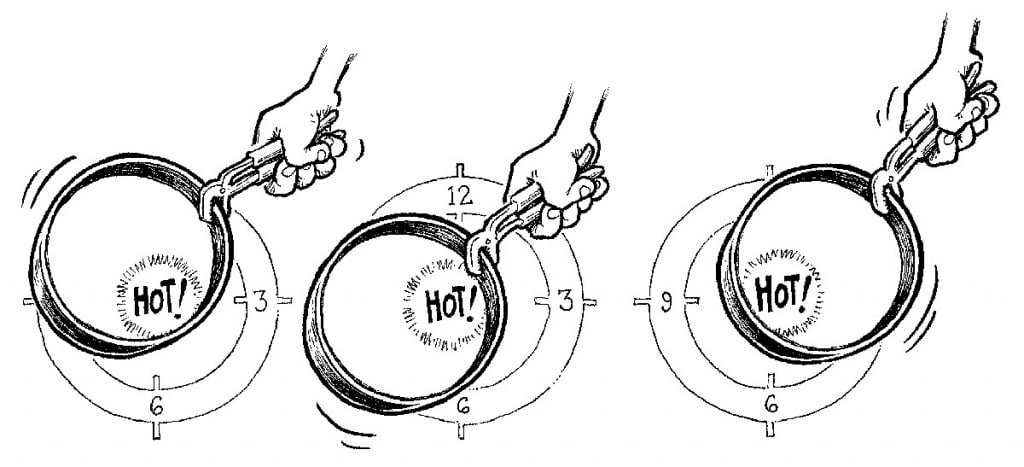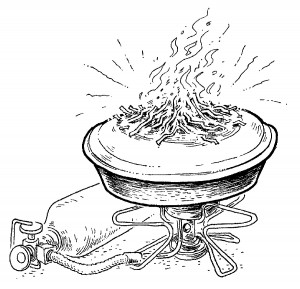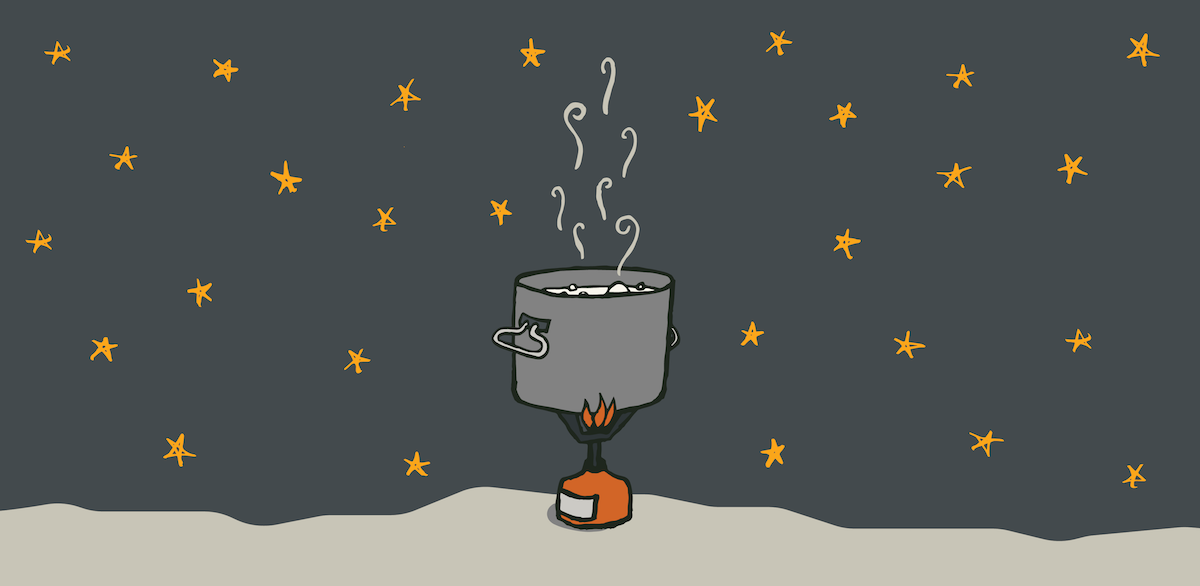
Become a master backcountry baker with these techniques!
1. “Tower of Power”

Light your stove and set it to low to medium heat. Bend your stove’s wind screen into a circle that you can rest your pan on. (*Make sure you fold the edges together a few times so that the tower doesn’t fall apart while you are cooking!) Place the wind screen around your stove as usual and place your baking pan on top of the tower to cook. Check out the backcountry baking video below to see this method in action!
You can use the “round the clock” technique of rotating the pan around the center of the stove to ensure even cooking.
Pro tip: Use a pot parka to keep the heat in if you have one.
2. “Twiggy Fire”

Set your stove to low heat. Place your covered baking pan on top, then build a small fire on top of the lid. Your lid must be flat and free of any plastic parts. Be sure to use the same level of care you would with any fire and be aware of any local fire regulations. See the NOLS Cookery for more info on this method!
For this method and the tower of power, you can reduce your stove’s heat by depressurizing. This must be done very carefully. To depressurize, start your stove as you normally would and allow it to heat up. Then, turn it off and blow out the flame, making sure it is completely out. Slowly unscrew the connection to the fuel bottle until you hear the hiss of the pressure releasing from the bottle. After 2-3 seconds, reattach the cap fully, give two pumps and re-light your stove. The resultant flame will be flickering and low. If it looks like it might go out, give the fuel bottle a pump or two.
Note: The “Twiggy Fire” and “Tower of Power” methods are often combined for faster, more even cooking. See the NOLS Cookery and watch the video below for a great demo!
3. Steam Baking
Steam baking is popular with those who carry only one pot or who have canister or other lightweight stoves that cannot be depressurized.
For this method, use silicone or foil baking cups and divide up your batter or dough among them. Take a piece of aluminum foil, roll it up, and shape the roll into a coil. Place the coil in the bottom of a pot or pan.
Fill the pan with an inch or two of water, add the batter-filled baking cups (make sure the water doesn’t come over the side of the baking cups), and place the covered pot on your stove. While cooking, check to make sure there is always water in the bottom of your pot and add more if needed.
4. Dutch Oven Style (Baking on a Fire)
If you have a campfire going, you can use the hot coals to bake! Spread coals from your fire into an even layer. They should feel very hot, but not so hot that you are unable to hold your hand six inches away for several seconds.
Place the pan on the coals and shovel more coals on top (those on top should be hotter than on bottom). As the coals cool, replace them with hot ones from the fire. (Learn more about this method in the NOLS Cookery.)
5. Inside an Orange Peel
This fun camping tip has become popular in the past few years. Though some may find it impractical for true backcountry use, it’s great for car camping or if you have room to bring fruit and don’t mind carrying out the peel.
Cut the top quarter off of an orange and carefully remove and eat the fruit without breaking through the rind. Fill the rind two thirds of the way with prepared cake or muffin batter. Replace the orange top and wrap the whole thing in aluminum foil. Cook on hot coals, rotating a few times for even cooking.
Get more details on this method and watch a demo here.
More baking tips from the Cookery:
- Don’t check on your baked goods too frequently, as this allows heat to escape.
- If the bottom is cooking too quickly, you can try flipping the whole thing over. Either cut your cake into pieces and flip, or turn the whole thing out onto a pot lid or plate.
- Make sure not to overfill your pan—half-full should do it. If your bread or cake is touching the lid when covered, it is likely to burn.
- When is it done? Cakes and muffins are done when they spring back when lightly touched in the center or when a pine needle inserted into the middle comes out clean.
Learn to make Baker's Backcountry Cake:
Written By
Katherine Boehrer
Katherine is an Alaska Backpacking graduate and was the NOLS Social Media Coordinator. When she’s offline she enjoys running, backpacking, hiking, and cooking.




